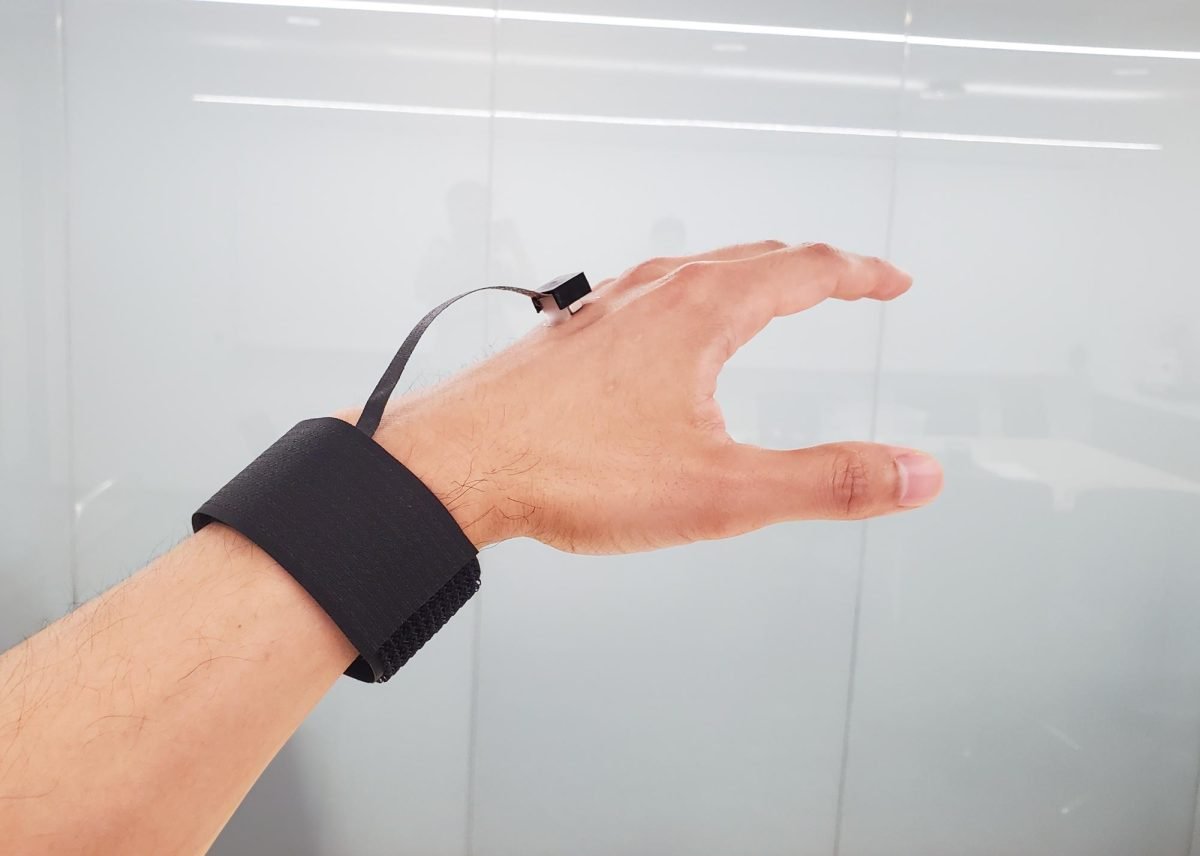NU researchers have developed a new device that can mimic human touch, making advancements in sensory substitution medical technologies.
The new study, published March 27 in Science, an acclaimed research journal, builds on a 2019 study published in Nature that focused on combining actuators — a machine component that produces force — into arrays that enhance virtual reality experiences, according to McCormick Prof. John Rogers, who led both studies.
While the 2019 device only created a buzzing vibration, Rogers said the new device delivers a wider variety of sensations, including sustained forces, poking forces, shear forces and even twisting forces.
Rogers described the device, known as a freedom of motion (FOM) actuator, as unexpectedly simple, likening its effects to the buzzing sensation a cell phone produces. The rest of the device is made up of coils and magnets.
When current flows through the coils, it creates a magnetic field that pushes the magnet in the actuator patch — which sits upon the user’s skin — in a specific direction. Different combinations of coils can generate almost any type of force by controlling how the magnet makes contact with the skin, Rogers said.
“We’re just reproducing the forces that would occur at the surface of the skin when you touch an ordinary solid object,” he said.
Civil & Environment Engineering postdoctoral student Shupeng Li, one of the study’s lead authors, said one of the challenges of this research was figuring out how to maximize the force in such a small object.
“If you shrink the size by 10 times, the force will decrease by 10 to the third, about 1000 times,” he said.
In order to mimic the physics of tactile sensation, Rogers said the engineers performed a demonstration in which they programmed the actuator device to reproduce the sensation of running a finger across the surfaces of different fabrics, such as burlap, silk and corduroy.
Rogers said the sensors assess the pressure that appears on the surface of the skin as each type of fabric is touched. This creates a “temporal profile” for the pattern of force that engineers can deliver to the skin’s surface using the magnet coil configuration.
“It’s not a perfect representation of what you would actually feel,” Rogers said, “But it’s getting close to that.”
The FOM actuator could have important medical applications, which is the overarching focus of Rogers’ research projects.
For patients who have lost feeling in the base of their feet and can’t tell when their feet are hitting the surface of the floor as they walk, the device can help them maintain a safe and normal stride, Rogers said.
“We’re basically mapping the pressure distribution that they would ordinarily feel on the base of their feet to a part of their body where they can sense that pattern of pressure,” Rogers said.
Postdoctoral researcher Kyoung-Ho Ha was a lead author of the March 27 paper.
Ha, who has worked on the project since 2022, said he’s proud of the initial response the publication has received.
“I got so many emails and messages of online congratulations,” he said. “Even the people who I don’t know, they messaged me and they wanted to talk about the research. I was really excited.”
Email: laurahorne2027@u.northwestern.edu
Related Stories:
— ‘One-stop-shop’ for med students: Feinberg students create AI study tool






